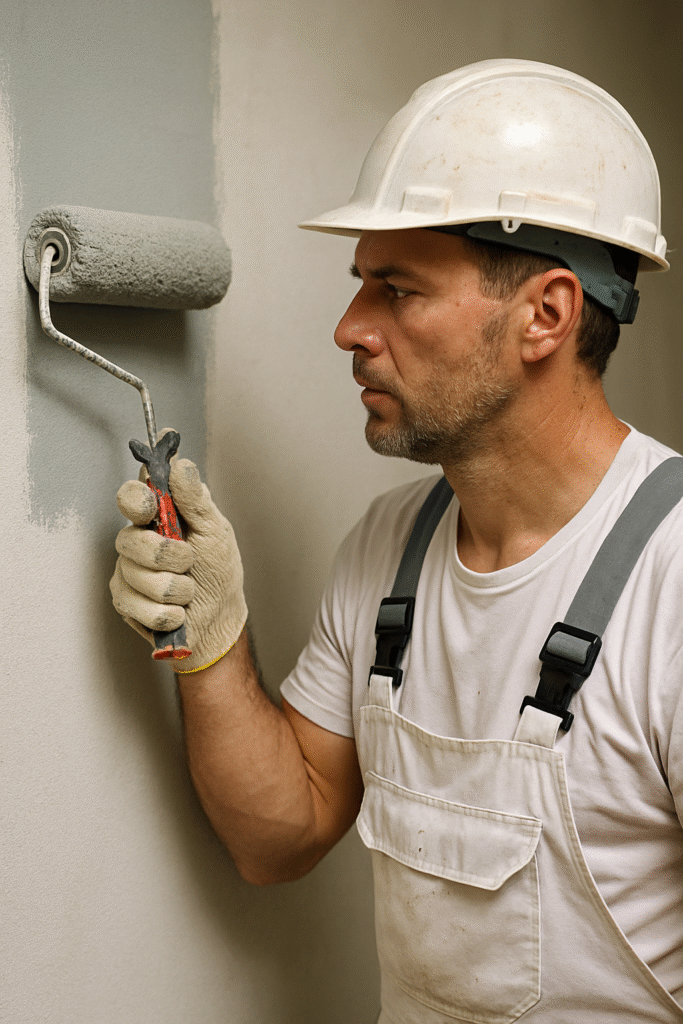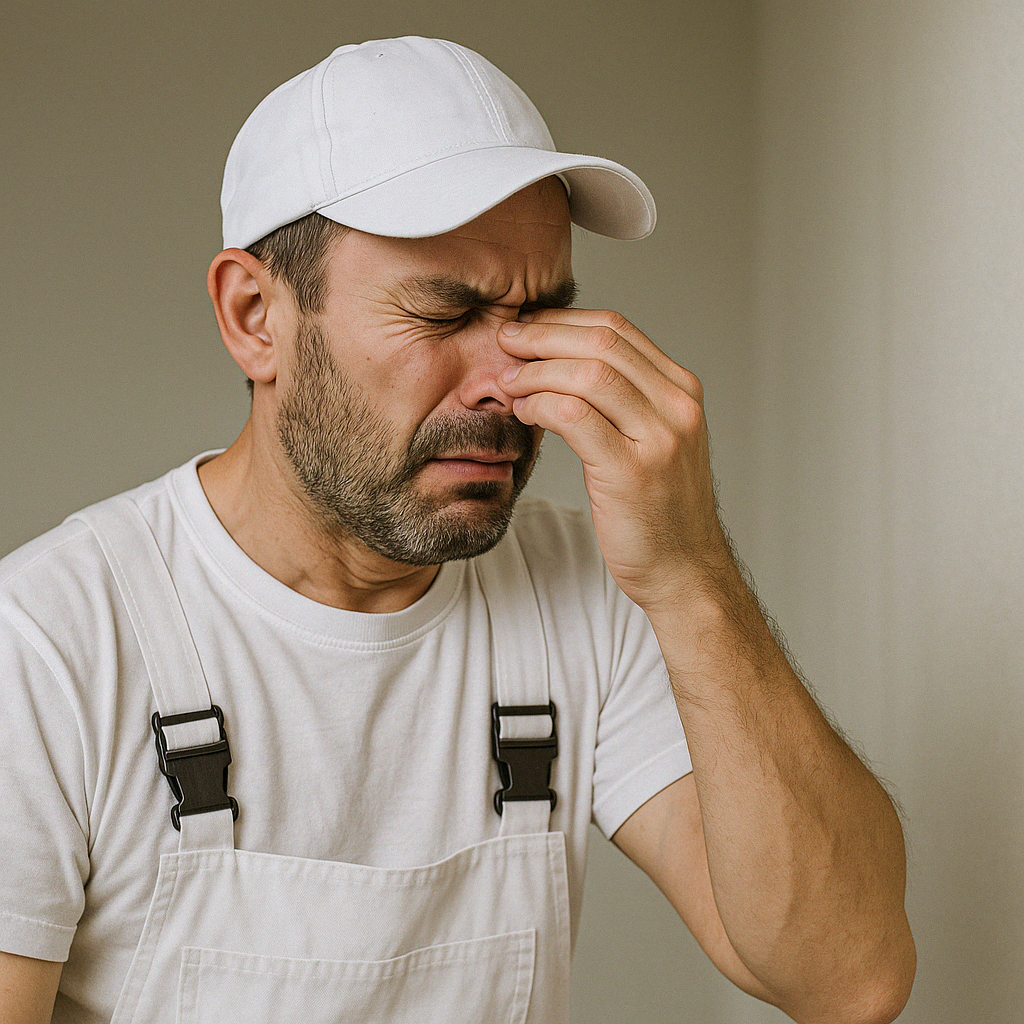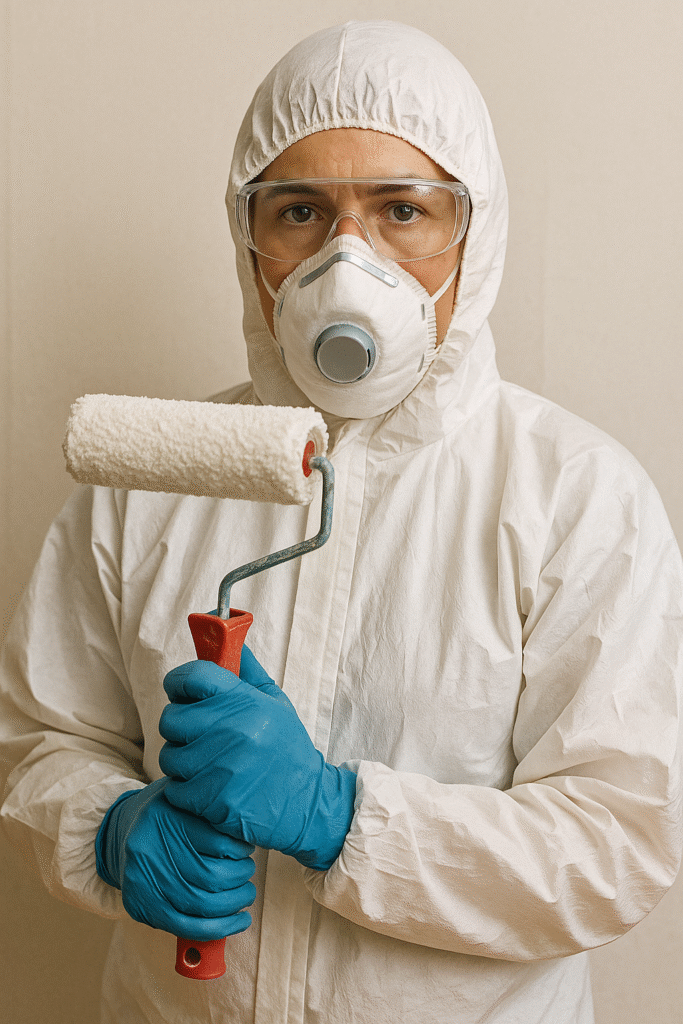Toxic Exposure in Painting Jobs is a significant concern for workers in residential, commercial, and industrial settings.
At the beginning of every job, understanding the risks associated with solvents and volatile organic compounds (VOCs) is essential to protect health, ensure compliance, and promote a safe work environment.

These harmful substances are often found in paints, thinners, coatings, and cleaning agents—posing both short-term and long-term health risks.
- Why Toxic Exposure in Painting Jobs Is a Serious Concern
- Understanding VOCs and Common Solvents
- Health Risks Associated with Toxic Exposure in Painting Jobs
- Controlling Exposure: Engineering and Administrative Controls
- Personal Protective Equipment (PPE) for Painters
- Workplace Training and Awareness
- Emergency Response and First Aid
- Environmentally Safer Alternatives
- Internal OHSE Support and Continuous Improvement
- Final Thoughts: Reducing Toxic Exposure in Painting Jobs Is Non-Negotiable
Why Toxic Exposure in Painting Jobs Is a Serious Concern
Painting tasks often involve close contact with chemicals that release harmful fumes into the air.
VOCs and solvents like toluene, xylene, acetone, and methylene chloride can be inhaled or absorbed through the skin, resulting in a range of health effects—from dizziness and headaches to liver damage, cancer, and neurological disorders.
According to WorkSafeBC, painters are at higher risk of occupational diseases related to chemical exposure than many other trades.
Understanding VOCs and Common Solvents
VOCs (Volatile Organic Compounds) are a group of chemicals that vaporize at room temperature. When applied as part of a coating, these chemicals evaporate into the air, often creating a strong odor and serious health hazard.

Common hazardous solvents in painting jobs include:
- Toluene – Found in many oil-based paints and thinners; neurotoxic at high concentrations.
- Xylene – Used as a solvent in varnishes; can cause dizziness and respiratory issues.
- Acetone – Common in primers and removers; causes skin and eye irritation.
- Methylene Chloride – Found in paint strippers; classified as a probable human carcinogen.
These chemicals are regulated under WHMIS 2015 and may also be listed on Safety Data Sheets (SDS) provided by manufacturers.
Health Risks Associated with Toxic Exposure in Painting Jobs

Short-term exposure symptoms:
- Eye, nose, and throat irritation
- Headaches and nausea
- Dizziness or confusion
Long-term exposure risks:
- Liver and kidney damage
- Central nervous system (CNS) effects
- Increased risk of cancer
- Reproductive issues and birth defects
The Canadian Centre for Occupational Health and Safety (CCOHS) emphasizes regular monitoring and protective measures to reduce worker vulnerability to such chronic effects.
Controlling Exposure: Engineering and Administrative Controls
Ventilation and Air Quality Control
One of the most effective ways to reduce toxic exposure is ensuring proper local exhaust ventilation (LEV).
This system captures fumes at the source before they spread. In enclosed or confined spaces, portable ventilation units and fume extractors should be used.
Safe Work Procedures
Employers should establish Standard Operating Procedures (SOPs) that outline:
- Proper mixing and handling of paints
- Safe storage of flammable liquids
- Limits on duration of high-exposure tasks
Job rotation can also minimize prolonged contact with hazardous substances.
Personal Protective Equipment (PPE) for Painters
Wearing the right PPE is critical to prevent toxic exposure in painting jobs. PPE should be selected based on the type and concentration of chemicals used.

- Respiratory Protection: Use half-mask or full-face respirators with organic vapor cartridges. For high-risk tasks, supplied-air respirators may be required.
- Skin Protection: Wear chemical-resistant gloves (nitrile or neoprene), coveralls, and aprons.
- Eye Protection: Use safety goggles or face shields to prevent splashes and vapors from reaching the eyes.
Refer to CSA Standard Z94.4 for respirator selection, fit-testing, and maintenance protocols.
Workplace Training and Awareness
Comprehensive training is a fundamental component of chemical safety. Workers must be trained in:
- Recognizing signs of overexposure
- Interpreting WHMIS labels and SDS sheets
- Emergency procedures and first aid for chemical contact or inhalation
Internal training programs should be refreshed annually and tailored to site-specific products and hazards. Many organizations offer online WHMIS refresher courses to stay compliant.
Emergency Response and First Aid
In case of overexposure:
- Move the affected individual to fresh air immediately.
- Rinse skin or eyes thoroughly with water for at least 15 minutes if contact occurs.
- Seek immediate medical help if symptoms persist or worsen.
Workplaces should have eyewash stations, emergency showers, and chemical spill kits readily accessible.
It’s also wise to establish a relationship with a nearby occupational health clinic for regular checkups and emergency consultations.
Environmentally Safer Alternatives
To reduce VOC levels and improve indoor air quality, consider:
- Low-VOC or Zero-VOC Paints – Certified by programs like Green Seal or EcoLogo.
- Water-based Solvents – Less hazardous and easier to clean up.
- Airless Spraying Equipment – Reduces overspray and solvent use.
While these options may carry a higher upfront cost, they offer long-term health and sustainability benefits.
Internal OHSE Support and Continuous Improvement
Organizations can further enhance chemical safety by conducting routine inspections, air monitoring, and health surveillance.
Safety audits and checklists should be implemented as part of a continuous improvement system—ensuring that issues are addressed before they become risks.
For example, you can find additional safety resources and checklists on OHSE.ca, an excellent Canadian platform offering real-world safety content.
Final Thoughts: Reducing Toxic Exposure in Painting Jobs Is Non-Negotiable
Toxic Exposure in Painting Jobs remains a significant hazard that requires diligence, awareness, and proactive safety management.
With the right combination of training, engineering controls, PPE, and safer product choices, painters can drastically reduce their exposure to dangerous solvents and VOCs. A safe painter is a healthy painter—and that should be the standard across all painting jobs.


No comments yet